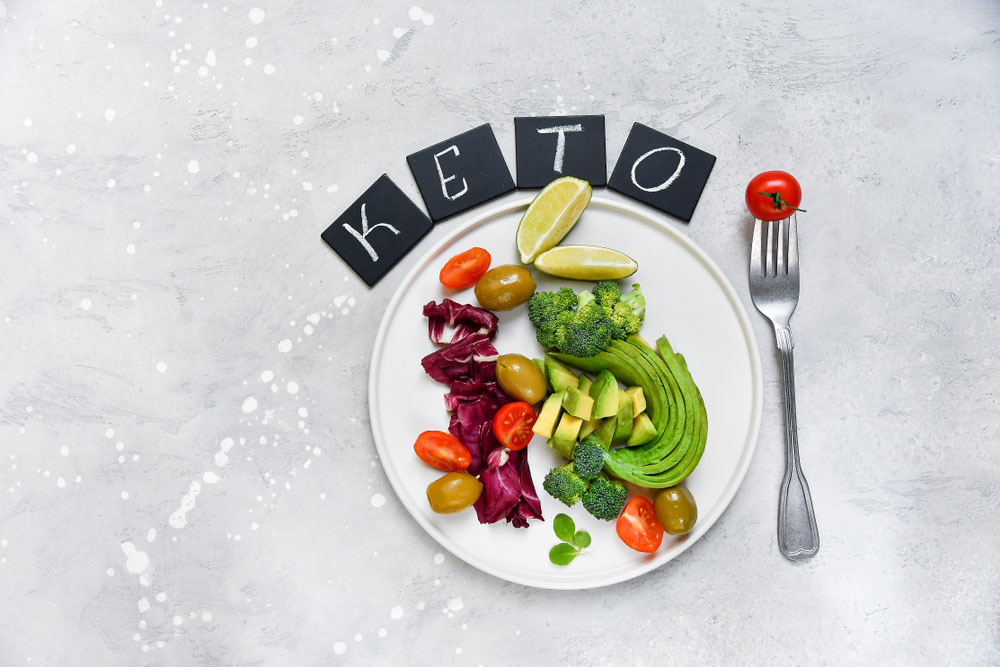- Your cart is empty
- Continue Shopping
How Does the Keto Diet Work

The popularity of the ketogenic diet has surged in recent years. You may have heard about the keto diet through magazine articles, acquaintances, or coworkers, leaving you to ask, “How exactly does the keto diet work?”
People have been told by dietitians, nutritionists, and the mainstream media that fat, especially saturated fat, is unhealthy. They advocated high-carb, low-fat diets because they believed a high-fat diet would cause heart disease, high blood pressure, high cholesterol levels, and other health hazards. The new study demonstrates, however, that these ideas are completely false.
In reality, a diet low in carbohydrates and rich in fat may be quite helpful to your health. You will discover the fundamentals of the ketogenic diet, the health advantages of ketosis, how the keto diet may lead to weight reduction, and how to determine whether you are in a ketogenic state.
The ketogenic diet is a low-carb, high-fat diet. The purpose of the ketogenic diet is to achieve ketosis, a metabolic state in which the body uses ketone bodies for energy rather than glucose. However, how does the keto diet function, and how does one reach a ketogenic state? Continue reading
The traditional American diet and the majority of Western diets are mostly composed of carbohydrates, with little protein and almost no fat. When the normal individual consumes a meal high in carbohydrates, their body turns those carbohydrates into glucose for energy. Then, insulin transports glucose into the cell. When carbs are available, glucose is the body’s principal energy source.
On keto, though, things are different. On the ketogenic diet, your carbohydrate consumption is extremely low; thus, when these carbohydrates are absent, your body must rely on another source of energy to function.
Here, fats come into play. In the absence of carbohydrates, the liver transforms fatty acids into ketone bodies, also known as ketones, which serve as an energy source. This state is known as ketosis, and achieving it is the objective of a ketogenic diet.
Three ketones are produced by the breakdown of fatty acids:
• Acetoacetate (AcAc) is produced first during ketosis
• Beta-hydroxybutyric acid (BHB): synthesized by acetoacetate
• Acetone is spontaneously produced as a byproduct of acetoacetate
Health Advantages of the Ketogenic Diet
The initial aim of the ketogenic diet was to prevent childhood epilepsy. Since then, though, it has been used for a variety of purposes. Among the finest and most well-known advantages of the ketogenic diet are:
• Better sleep patterns and fewer symptoms of restlessness and weariness • Satiety, or feeling fuller and more content during and after meals, leading to weight reduction]
• Increased mental clarity, helping you to concentrate for extended periods of time
• Fat loss, or fat loss with maintaining muscular mass
What to Consume on a Ketogenic Diet
Keto involves consuming a lot of fat. On the ketogenic diet, you will consume the great majority of your calories from fat, along with some protein and very few carbs. For most individuals, the keto diet macronutrient breakdown like this:
• 70-80% of your calories will come from fat • 20-25% of your calories will come from protein • 5-10% of your calories will come from carbs
Those who are already used to a low-carb diet may need to consume even fewer carbohydrates to attain a healthy state of ketosis.
On a ketogenic diet, you will consume high-fat foods such as avocado, coconut oil, olive oil, MCT oil, nuts, and seeds. You will also consume high-quality grass-fed meats, fish, eggs, and full-fat dairy products.
Vegetables such as kale, cauliflower, Brussels sprouts, and spinach provide fiber, vitamins, and minerals.
On keto, you should avoid grains (including whole grains), flour, and sugar at all costs; as a general guideline, you should only consume vegetables with less than 10 grams of carbohydrates per serving (or around 5 grams of net carbs). Your diet should try to reduce your daily carbohydrate consumption to fewer than 30 grams.
On the keto diet, you should not limit your caloric intake. This is one of the most common blunders on the keto diet when individuals do not consume enough calories after eliminating carbohydrates and sugar.
Why You Should Not Monitor Your Protein Intake
Contrary to what some individuals may believe, consuming too much protein on the ketogenic diet will not take you out of ketosis.
Gluconeogenesis (GNG) is a biochemical process in your body that is sometimes misunderstood. Some sources claim that excessive protein consumption activates GNG and raises blood sugar, however, this is a misconception.
Here is the reality:
GNG is responsible for the production of glucose from non-carb sources, such as protein, lactate, and glycerol. • Fueling the few tissues that cannot use ketones, including a portion of your brain, red blood cells, and testicles
• Maintaining a healthy blood sugar level
• Formation of glycogen
Without gluconeogenesis, ketosis could not occur. Ketones are a fantastic source of fuel, but because they cannot power all of your tissues, GNG fills in the gap.
GNG is also a fairly stable process, so even if you consume more protein than the usual keto macros allow, the rate of GNG will not rise enough to push you out of ketosis.
How to Become Obese Modified
Ketosis is a normal bodily process. It occurs in the most severe cases when the body goes for extended periods without meals.
In reality, many of you are already in ketosis by the time you wake up in the morning, after 10–12 hours without eating (since dinnertime the evening before). The ketogenic diet “starves” the body of carbohydrates to prepare it to use fat as fuel.
When your body is initially adjusting to running on ketones, you may encounter undesirable side effects. These include the flu-like symptoms known as keto flu, such as brain fog, moderate nausea, headaches, and lethargy. However, as you adhere to the diet, your body will learn to favor fat as an energy source and become keto-adapted.
How can you ensure that your ketogenic diet is “working” and that you are sustaining ketosis? By monitoring your ketone levels on a regular basis.
How to Determine Whether You’re in Ketosis
Only by measuring your blood ketone levels can you determine whether you have entered (and stay in) ketosis. This is vital to ensure that you get all of the ketogenic diet’s advantages.
When your body begins to use fat as fuel and enters ketosis, the blood ketones it produces will leak into your urine, blood, and exhaled air. Consequently, it is feasible to test for them at each location.
There are many at-home ways for measuring ketone levels.
Urine Analysis
You may get urine strips that color-code your ketone level. Typically, they are available for a reasonable price at your local drugstore or pharmacy.
Urine tests are not always accurate, particularly if you’ve been in ketosis for an extended period of time. When you’re more efficient at using ketones, you may have a lower amount of ketones, even if you’re consuming them.
Additionally, hydration and electrolyte levels might influence the reading.
Breath Analysis
On the breath, acetone is the ketone that may be detected with a breathalyzer.
After buying a breathalyzer, there are no further testing expenses, unlike with pee strips. However, this approach is not the most trustworthy and should not typically be your main testing strategy.
Blood Analysis
This is the most precise method for measuring ketone levels. Using a blood glucose meter and a blood strip, ketones may be measured. If you test regularly, this process might become rather costly.
For the greatest results, you should supply your body with appropriate nourishment from rich, healthy fat sources, nutrient-dense protein, and other meals containing the vitamins and minerals your body needs.
How Does Ketogenic Diet Work? By assisting in fat oxidation for energy
The ketogenic diet is a low-carb, high-fat diet. This diet, which was once employed as a therapy for epilepsy, has been demonstrated to enhance mental clarity, increase energy levels, improve sleep patterns, and result in quick weight and fat reduction.
The ketogenic diet works by reducing your body’s consumption of carbs, which are turned into glucose. When the body lacks glucose for energy, it begins to burn fat instead. The purpose of the ketogenic diet is to achieve a metabolic state of ketosis in which the body uses fat (which is subsequently converted into ketones) as its major fuel source.




